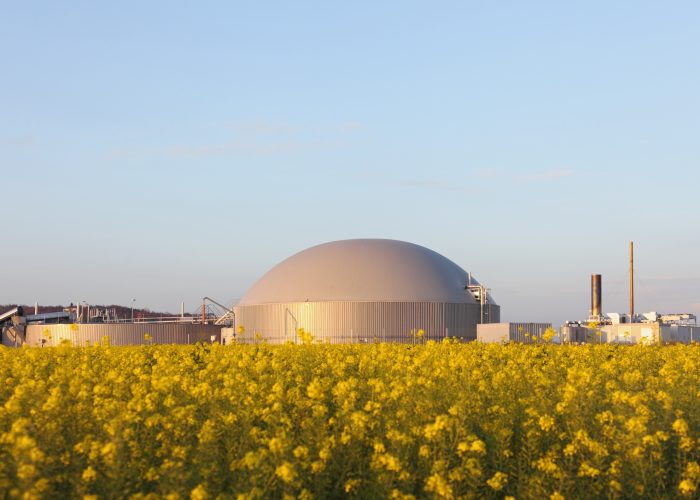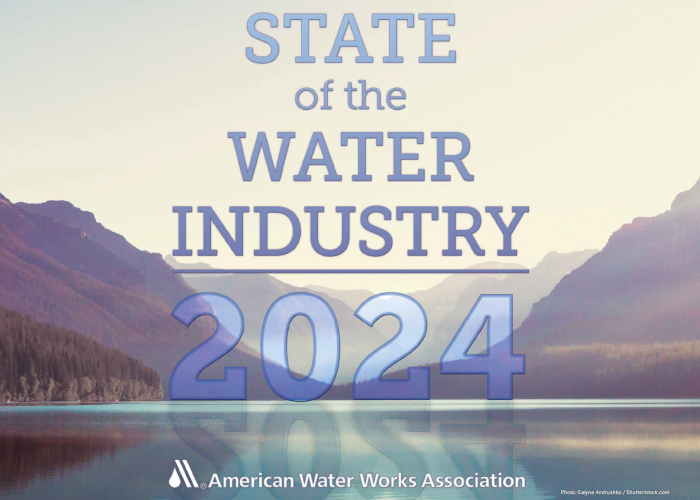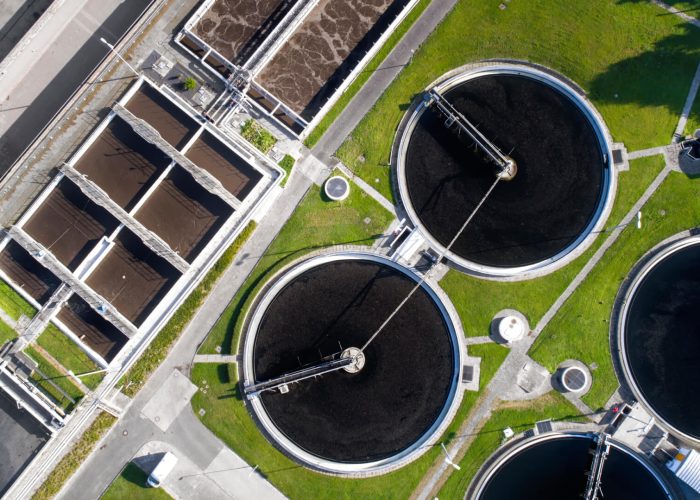Introduction
The future of renewable energy may be found in our waste! According to the Environmental and Energy Study Institute, the U.S. alone produces more than seventy million tons of organic waste each year. Instead of letting that waste fill landfills or pollute the environment, it can be repurposed into renewable energy. Biogas is a sustainable solution that repurposes our waste and promises cost savings, environmental benefits, and endless possibilities for cities, towns, and counties across the United States. Read on to learn how biogas can reshape municipalities by increasing revenues and decreasing fuel costs.
Biogas, Defined
Biogas is a renewable energy source created when tiny organisms break down organic materials like food waste, sewage, and animal manure in an environment without oxygen. As these organisms munch away on the waste, they produce biogas, a mixture of methane and carbon dioxide. This process, called anaerobic digestion, occurs naturally in places like swamps, but it can easily be replicated in special tanks called anaerobic digesters. Once digested, the biogas is captured and used as a renewable energy source.
What’s great about biogas is that it can be used to produce electricity and heat, just like natural gas. However, unlike natural gas and other fossil fuels, which will eventually run out, biogas can continue to be produced as long as there is organic waste. Given the seemingly endless supply of waste humans produce, biogas is an appealing solution to reduce the amount of waste going to landfills and lower greenhouse gas emissions. It’s like recycling but for energy!
The Process of Generating Biogas
By harnessing the power of anaerobic digestion, biogas is a sustainable solution for managing organic waste while simultaneously providing renewable energy and valuable byproducts. The process of creating biogas and harnessing it for other purposes includes:
- Feedstock Collection: The process begins with the collection of organic materials, known as feedstock, which includes agricultural residues (like crop residues and animal manure), food waste from households or restaurants, sewage sludge from wastewater treatment plants, and organic components of municipal solid waste.
- Preparation and Mixing: The collected feedstock may undergo pre-processing to shred or grind larger materials into smaller particles, aiding the digestion process.
- Anaerobic Digestion: The prepared feedstock is then introduced into a sealed anaerobic digester. This digester provides an oxygen-free environment, which is essential for microorganisms to thrive and break down organic matter.
- Microbial Activity: Within the anaerobic digester, various types of bacteria and archaea carry out a series of biochemical reactions to decompose the complex organic molecules present in the feedstock. These microorganisms work in stages, with different species specializing in the breakdown of specific components such as carbohydrates, proteins, and lipids.
- Biogas Production: Microbial activity converts organic matter into a mixture of gases.
- Gas Collection and Utilization: The produced biogas is collected from the top of the digester and is stored or processed for various applications. Depending on the specific needs and infrastructure, biogas can be used directly for heating, cooking, or electricity generation through combustion in engines or turbines.
- Digestate Management: After the anaerobic digestion process, the remaining material, known as digestate, exits the digester. Since it is rich in nutrients, digestate can be further processed and utilized as a soil conditioner or fertilizer, returning valuable nutrients to agricultural lands.
Biogas in Wastewater Treatment Plants
Wastewater treatment plants produce biogas through the anaerobic digestion of sewage sludge, which is the semi-solid material that remains after wastewater has been treated. Here’s a quick look at how biogas is integrated into the wastewater treatment process:
- Sewage Treatment: Wastewater treatment plants (WWTPs) process sewage to remove contaminants. The process typically involves primary treatment (removal of large solids), secondary treatment (biological treatment to degrade organic matter), and sometimes tertiary treatment (further purification).
- Sludge Production: During the treatment process, solid waste materials, known as sludge, are generated.
- Anaerobic Digestion: The sludge is transferred to anaerobic digesters to become biogas.
- Energy Production: The biogas is then used to generate electricity and heat, either on-site or exported to the grid. This energy can power the treatment plant, reducing its reliance on external energy sources and lowering operational costs.
- Upgrading to Biomethane: Biogas can be upgraded to biomethane by removing impurities and carbon dioxide, resulting in a product that is nearly identical to natural gas.
Related Reading: The Disappearing Utility Workforce
Waste Streams for Generating Biogas
Food Waste
Food waste refers to any organic material discarded during food production, processing, distribution, and consumption. Because food scraps are packed with nutrients, they are an excellent feedstock for biogas production. This can include leftovers from meals, spoiled produce, expired packaged goods, and food preparation waste from households, restaurants, grocery stores, and food manufacturers.
Grease
Fats, oils, and grease from cooking processes are often challenging waste to handle. If improperly disposed of, they can clog pipes or cause environmental pollution. However, they are a great source of feedstock! Both animal fats and vegetable oils used in cooking, frying, and food preparation can be used as an organic waste stream for biogas.
Other Organics
The category of “other organics” encompasses a wide range of organic waste streams beyond food waste and grease, including yard waste, agricultural residues, sewage sludge, and industrial byproducts. Yard waste includes grass clippings, leaves, branches, and garden trimmings, while agricultural residues refer to crop residues and animal manure. Sewage sludge, as mentioned earlier, is the solid material remaining after wastewater treatment. Lastly, industrial byproducts from various manufacturing processes, such as breweries, dairies, and food processing plants, can also serve as valuable feedstock for biogas production.
Biogas Uses for U.S. Cities and Towns
Urban communities have various options for using biogas. Most, if not all, require the biogas to be cleaned and purified into biomethane. In that state, it acts very similar to natural gas and can be used for various processes, including heating, net metering, and fuel for fleets.
Generate Revenue with Net Metering into Gas Pipelines
Cities can generate revenue by turning their organic waste into biogas and putting it into natural gas pipelines. Biogas can be cleaned to make biomethane, which is similar to natural gas. The cleaned biomethane is added to natural gas pipelines, and cities get paid based on how much they produce. They can also sell renewable energy credits to companies that need to meet green energy goals to generate additional revenue. This method helps cities save on waste disposal, lower emissions, and create a new source of income, benefiting both the economy and the environment.
Decrease Fuel Costs by Using Biogas for Fleets
Instead of using the biomethane from cleaned biogas for net metering, it can be used to power vehicle fleets. Municipal vehicles, like buses and garbage trucks, can be converted to run on biomethane. Since biomethane is often cheaper than diesel or gasoline, this can lower fuel costs for cities and towns across the United States. However, cities need the infrastructure for fueling stations to store and dispense this fuel. This can be an added upfront cost but beneficial in the long run as using biogas promotes a sustainable and eco-friendly energy solution.
Decrease Gas Bills by Using Biogas for Heat
Cities and towns can use the cleaned biomethane similarly to natural gas in various heating applications. It can be used to heat municipal buildings, schools, and homes or for industrial processes that require heat. By replacing or supplementing traditional natural gas with biomethane, cities can significantly reduce their gas bills. Additionally, using locally produced biomethane can minimize transportation and distribution costs. This not only leads to direct savings on energy expenses but also promotes environmental sustainability by reducing reliance on fossil fuels.
Additional Uses of Biogas
Biogas can be used in a variety of additional ways. It can be used as electricity, powering municipal facilities, streetlights, public transportation systems, and emergency power supplies. It can also be used in combined heat and power (CHP) systems to simultaneously generate electricity and heat to provide energy to residential, commercial, and industrial buildings. Better yet, an ideal solution for cities and towns is wastewater treatment facilities. Because WWTPs generate biogas from sewage sludge, the biogas can power the entire treatment process. According to a study released by the National Association of Clean Water Agencies, the Water Environment Research Foundation, and the Water Environment Foundation, WWTPs could potentially meet 12% of the national electricity demand through biogas generation. This could be a huge cost and energy saver for cities and towns.
Challenges with Implementing Biogas Projects
Biogas projects are not without their challenges. They require careful planning, strong project management, stakeholder engagement, and potentially innovative financing solutions, like energy savings performance contracts, to ensure successful implementation and sustainability. Key considerations for municipal decision-makers to consider include:
- Initial Investment: The setup costs for biogas plants, including anaerobic digesters, upgrading equipment, and infrastructure for collection and distribution, can be substantial. Securing funding and investment for these projects can be a significant barrier; however, funding solutions like performance contracts could help.
- Technical Expertise: Developing and operating biogas facilities requires specialized knowledge in areas such as microbiology, engineering, and environmental science. Cities may need to hire or train personnel to ensure successful project implementation and operation.
- Feedstock Supply and Quality: Ensuring a consistent and reliable supply of organic waste feedstock is necessary for continuous biogas production. Variations in the quantity and quality of feedstock can affect the biogas plant’s efficiency.
- Regulatory and Permitting Issues: Navigating the regulatory landscape can be complex and time-consuming. Projects must comply with environmental regulations, obtain necessary permits, and adhere to safety standards.
- Infrastructure Development: Existing infrastructure, such as pipelines, fueling stations, and distribution networks, may need to be upgraded or expanded to accommodate biogas.
Related Reading: Unlocking Savings and Efficiency: A Public Owner’s Guide to Performance Contracting
The Future is in Biogas
Biogas presents a compelling, sustainable energy solution for urban communities, offering numerous benefits such as reduced energy costs, improved waste management, and decreased greenhouse gas emissions. Its versatile applications, from electricity generation and heating to powering vehicle fleets and integrating into natural gas grids, highlight its potential to transform urban energy landscapes into smarter, more resilient cities. With careful planning, strong community engagement, and innovative solutions, urban communities can harness the power of biogas to foster a cleaner, more sustainable future.
Our industry experts can help you find solutions to your municipal and utility needs, including exploring biogas solutions. Contact us today for an initial assessment to see how we can best meet your needs while saving energy and reducing costs.





